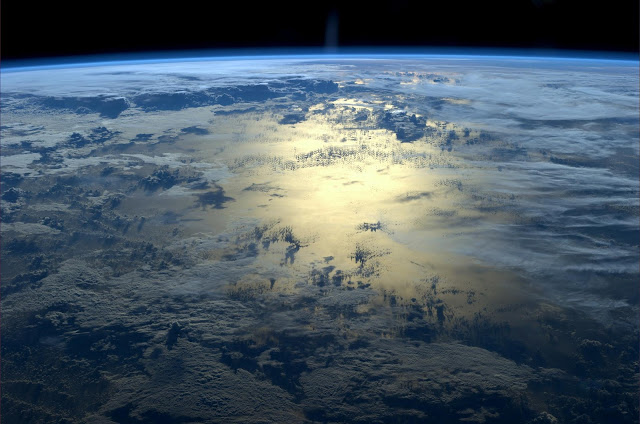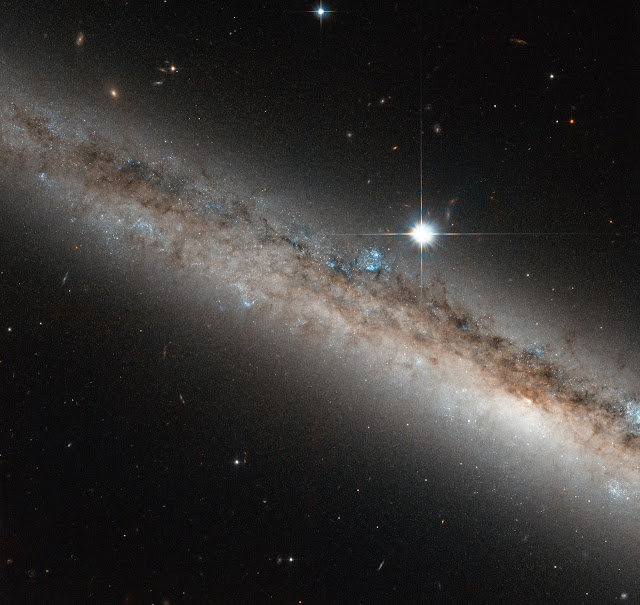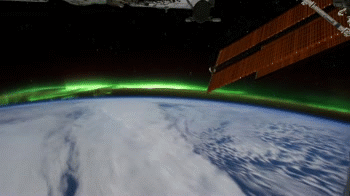The Earth
Earth is the third planet from the Sun, the densest planet in the Solar System, the largest of the Solar System's four terrestrial planets, and the only astronomical object known to harbor life.
According to evidence from radiometric dating and other sources, Earth was formed about 4.54 billion years ago. Earth gravitationally interacts with other objects in space, especially the Sun and the Moon. During one orbit around the Sun, Earth rotates about its own axis 366.26 times, creating 365.26 solar days or one sidereal year. Earth's axis of rotation is tilted 23.4° away from the perpendicular of its orbital plane, producing seasonal variations on the planet's surface with a period of one tropical year (365.24 solar days). The Moon is Earth's only permanent natural satellite. Its gravitational interaction with Earth causes ocean tides, stabilizes the orientation of Earth's rotational axis, and gradually slows Earth's rotational rate.
Earth's lithosphere is divided into several rigid tectonic plates that migrate across the surface over periods of many millions of years. 71% of Earth's surface is covered with water, with the remainder consisting of continents and islands that together have many lakes and other sources of water that contribute to the hydrosphere. Earth's polar regions are mostly covered with ice, including the Antarctic ice sheet and the sea ice of the Arctic ice pack. Earth's interior remains active with a solid iron inner core, a liquid outer core that generates the magnetic field, and a convecting mantle that drives plate tectonics.
Within its first billion years, life appeared in Earth's oceans and began to affect its atmosphere and surface, promoting the proliferation of aerobic as well as anaerobic organisms. Since then, the combination of Earth's distance from the Sun, its physical properties and its geological history have allowed life to thrive and evolve. The earliest undisputed life on Earth arose at least 3.5 billion years ago. Earlier physical evidence of life includes biogenic graphite in 3.7 billion-year-old metasedimentary rocks discovered in southwestern Greenland, as well as "remains of biotic life" found in 4.1 billion-year-old rocks in Western Australia. Earth's biodiversity has expanded continually except when interrupted by mass extinctions. Although scholars estimate that over 99% of all species of life (over five billion) that ever lived on Earth are extinct, there are still an estimated 10–14 million extant species, of which about 1.2 million have been documented and over 86% have not yet been described. Over 7.3 billion humans live on Earth and depend on its biosphere and minerals for their survival. Earth's human population is divided among about two hundred sovereign states which interact through diplomacy, conflict, travel, trade and communication media.
Neptune
Neptune is the eighth and farthest known planet from the Sun in the Solar System. It is the fourth-largest planet by diameter and the third-largest by mass. Among the giant planets in the Solar System, Neptune is the most dense. Neptune is 17 times the mass of Earth and is slightly more massive than its near-twin Uranus, which is 15 times the mass of Earth and slightly larger than Neptune. Neptune orbits the Sun once every 164.8 years at an average distance of 30.1 astronomical units (4.50×109 km). Named after the Roman god of the sea, its astronomical symbol is ♆, a stylised version of the god Neptune's trident.
Neptune is not visible to the unaided eye and is the only planet in the Solar System found by mathematical prediction rather than by empirical observation. Unexpected changes in the orbit of Uranus led Alexis Bouvard to deduce that its orbit was subject to gravitational perturbation by an unknown planet. Neptune was subsequently observed with a telescope on 23 September 1846 by Johann Galle within a degree of the position predicted by Urbain Le Verrier. Its largest moon, Triton, was discovered shortly thereafter, though none of the planet's remaining known 14 moons were located telescopically until the 20th century. The planet's distance from Earth gives it a very small apparent size, making it challenging to study with Earth-based telescopes. Neptune was visited by Voyager 2, when it flew by the planet on 25 August 1989. The advent of Hubble Space Telescope and large ground-based telescopes with adaptive optics has recently allowed for additional detailed observations from afar.
Neptune is similar in composition to Uranus, and both have compositions that differ from those of the larger gas giants, Jupiter and Saturn. Like Jupiter and Saturn, Neptune's atmosphere is composed primarily of hydrogen and helium, along with traces of hydrocarbons and possibly nitrogen, but it contains a higher proportion of "ices" such as water, ammonia, and methane. Scientists sometimes categorise Uranus and Neptune as "ice giants" to emphasise this distinction. The interior of Neptune, like that of Uranus, is primarily composed of ices and rock. Traces of methane in the outermost regions in part account for the planet's blue appearance.
In contrast to the hazy, relatively featureless atmosphere of Uranus, Neptune's atmosphere has active and visible weather patterns. For example, at the time of the Voyager 2 flyby in 1989, the planet's southern hemisphere had a Great Dark Spot comparable to the Great Red Spot on Jupiter. These weather patterns are driven by the strongest sustained winds of any planet in the Solar System, with recorded wind speeds as high as 2,100 kilometres per hour (580 m/s; 1,300 mph). Because of its great distance from the Sun, Neptune's outer atmosphere is one of the coldest places in the Solar System, with temperatures at its cloud tops approaching 55 K (−218 °C). Temperatures at the planet's centre are approximately 5,400 K (5,100 °C). Neptune has a faint and fragmented ring system (labelled "arcs"), which was first detected during the 1960s and confirmed by Voyager 2.
Explanation from: https://en.wikipedia.org/wiki/Earth and https://en.wikipedia.org/wiki/Neptune



































